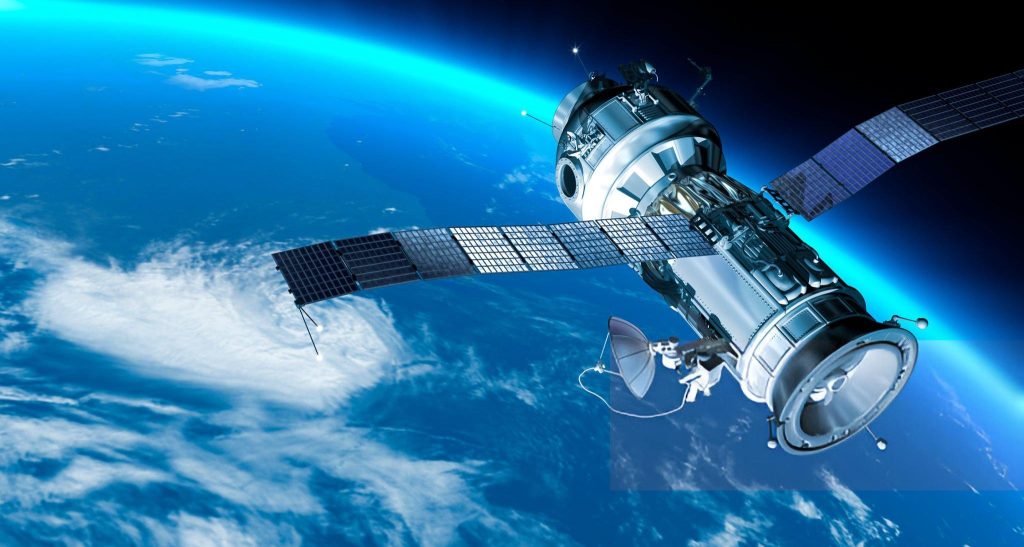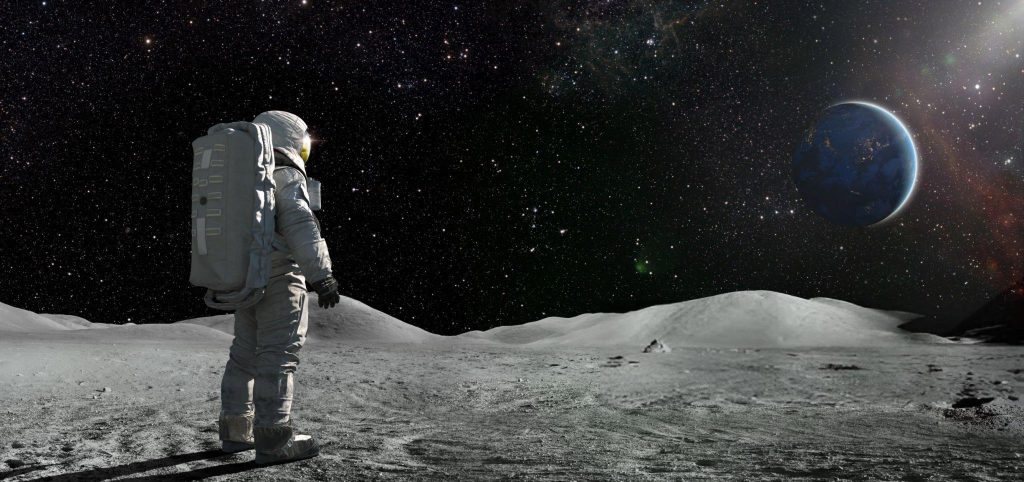
Once the exclusive domain of government agencies and a select group of astronauts, space is becoming the next frontier for tourism. The dream of traveling beyond Earth is no longer confined to the realm of science fiction. With advancements in aerospace technology and the emergence of private space companies, space tourism is now an achievable goal for those seeking out-of-this-world adventures. From suborbital flights that offer a few minutes in microgravity to more ambitious plans for lunar missions, space tourism is opening up new possibilities for exploration and redefining the future of travel.
As the field of space tourism expands, companies are working to make space accessible to more people, transforming an extraordinary experience into a reality that may one day be as common as boarding an airplane. This article explores the rapid development of space tourism which is fast becoming a travel trend for 2025, the companies leading the charge, and what the future might hold for adventurers looking to journey beyond Earth’s atmosphere.
The Pioneers of Space Tourism
The idea of space tourism is not entirely new; the first space tourist, American businessman Dennis Tito, flew to the International Space Station (ISS) in 2001. However, his journey cost a staggering $20 million and was facilitated by Russia’s space agency, Roscosmos, rather than a commercial company. Today, private companies like SpaceX, Blue Origin, and Virgin Galactic are spearheading the space tourism movement, developing technology that promises to make space more accessible and affordable for private citizens.
Each of these companies has taken a slightly different approach:
- Virgin Galactic
Founded by Sir Richard Branson, Virgin Galactic is focused on suborbital tourism, offering passengers a few minutes of weightlessness at the edge of space. Using its SpaceShipTwo vehicle, Virgin Galactic takes off from a runway, reaches space for a brief period, and then glides back to Earth. The company conducted its first successful space tourism flight with paying customers in 2023 and has since opened ticket sales, with prices around $450,000 per seat. - Blue Origin
Jeff Bezos’s Blue Origin also focuses on suborbital tourism with its New Shepard rocket, which offers a similar experience of weightlessness and views of Earth from the edge of space. Unlike Virgin Galactic, which uses a runway for takeoff, New Shepard launches vertically from a launchpad. Blue Origin made headlines in 2021 when it sent Bezos and other passengers, including the oldest and youngest people to go to space, on a successful suborbital flight. The company’s approach aims to make space accessible to a broad range of passengers, from adventure-seekers to researchers. - SpaceX
Elon Musk’s SpaceX has a more ambitious vision for space tourism, with plans to facilitate orbital flights, lunar missions, and eventually Mars colonization. The company’s Crew Dragon capsule, initially developed for NASA missions, has been adapted for private use. In 2021, SpaceX launched its first all-civilian mission, Inspiration4, which orbited Earth for three days. SpaceX also has plans for a lunar tourism mission using its Starship vehicle, which promises to take passengers on a journey around the Moon in the near future.

The Space Tourism Experience: What to Expect
While space tourism remains in its infancy, each company’s offerings give us a glimpse into what future travelers can expect from a journey to space. Here’s an overview of the experience:
1. Training and Preparation
Space tourism requires more than just a ticket; passengers must undergo rigorous training to prepare for the journey. This includes familiarization with the spacecraft, emergency procedures, and adapting to microgravity. Training programs can last from several days to a few weeks, depending on the mission’s complexity. Many companies also provide centrifuge sessions to simulate the high G-forces passengers will experience during takeoff and re-entry, ensuring they are physically and mentally prepared.
2. The Launch and Ascent
For suborbital flights, passengers experience a rapid ascent that lasts only a few minutes before reaching the edge of space. The New Shepard rocket, for example, reaches an altitude of around 66 miles above Earth, where passengers experience weightlessness and breathtaking views of the planet’s curvature. Orbital missions like those offered by SpaceX last much longer, with ascent phases that take several hours before the spacecraft reaches stable orbit.
3. Weightlessness and the View of Earth
The experience of weightlessness is one of the main draws of space tourism. For several minutes (or longer, on orbital missions), passengers can float freely, an experience that many describe as life-changing. In addition to weightlessness, space tourists are treated to unparalleled views of Earth, including the iconic sight of the blue planet against the vastness of space. Suborbital flights provide a brief glimpse, while orbital missions allow passengers to see sunrise and sunset multiple times each day as they orbit Earth.
4. Re-entry and Landing
After their time in space, passengers return to Earth, re-entering the atmosphere and experiencing intense G-forces. For companies like Virgin Galactic, which uses a gliding descent, the return journey is relatively smooth. Blue Origin’s New Shepard lands vertically with the help of parachutes, while SpaceX’s Dragon capsule splashes down in the ocean. Each company is working to make re-entry and landing as safe and comfortable as possible for passengers.
The Cost of a Ticket to Space
Currently, space tourism is not cheap. Ticket prices range from $450,000 for a seat on Virgin Galactic’s SpaceShipTwo to several million dollars for longer orbital missions. These costs reflect the immense investment in technology, safety, and logistics required to ensure a safe journey. However, as technology advances and economies of scale come into play, industry experts anticipate that prices will decrease over time, potentially making space tourism accessible to a wider audience.
The goal for many companies is to bring prices down to a level where a larger segment of the population can afford to experience space travel. While a $100,000 ticket may still seem steep, it’s far more affordable than the $20 million that early space tourists like Dennis Tito paid.
The Environmental and Ethical Considerations of Space Tourism
While space tourism promises unique experiences, it also raises environmental and ethical questions. Rocket launches release significant amounts of CO₂ and other pollutants into the atmosphere. Given the current climate crisis, some critics argue that space tourism’s environmental impact could be unjustifiable, especially if it becomes a popular trend.
Companies like Blue Origin are exploring reusable rockets to minimize waste, and SpaceX has focused heavily on reusability with its Falcon 9 and Starship systems. However, these efforts only partially mitigate the environmental cost, and further innovations will be needed to make space tourism sustainable.
Ethically, space tourism also raises questions about resource allocation. Critics point out that the vast sums spent on space tourism could be redirected toward pressing issues on Earth, such as poverty, healthcare, and environmental protection. Proponents argue that space exploration has historically led to technological advancements that benefit society, and that the industry could ultimately drive sustainable technology for broader applications.

The Future of Space Tourism: A New Frontier
As technology continues to advance, the future of space tourism looks promising, with several exciting developments on the horizon:
- Lunar and Deep-Space Missions
SpaceX and other companies have expressed interest in offering lunar flybys, where passengers orbit the Moon, providing a closer view of our celestial neighbor. In the long term, deep-space tourism could include longer missions to Mars or even space hotels in orbit. - Lower Costs and Greater Accessibility
As competition grows and technology improves, space tourism prices are expected to drop, making the experience more accessible. If current trends continue, commercial space travel may become an option for adventurous travelers from diverse backgrounds. - Development of Space Habitats
Some companies are exploring the concept of space hotels and habitats that would allow tourists to stay in orbit for extended periods. Such developments would mark a new chapter in human exploration, where people could live and work in space.
Conclusion: A New Era of Exploration
Space tourism marks the beginning of a new era in travel, one where the boundaries of exploration extend far beyond Earth. While there are challenges to overcome—both environmental and ethical—the allure of space continues to captivate the human spirit. For those with the means and courage to venture beyond our planet, space tourism offers an unprecedented journey that promises awe, perspective, and perhaps a new appreciation for our fragile home.
As companies refine the technology and make strides in sustainability, the dream of space travel may one day be within reach for people around the world. Until then, space tourism stands as a testament to human ambition and the timeless desire to explore the unknown. For the pioneers of this movement, the sky is no longer the limit—it’s just the beginning.